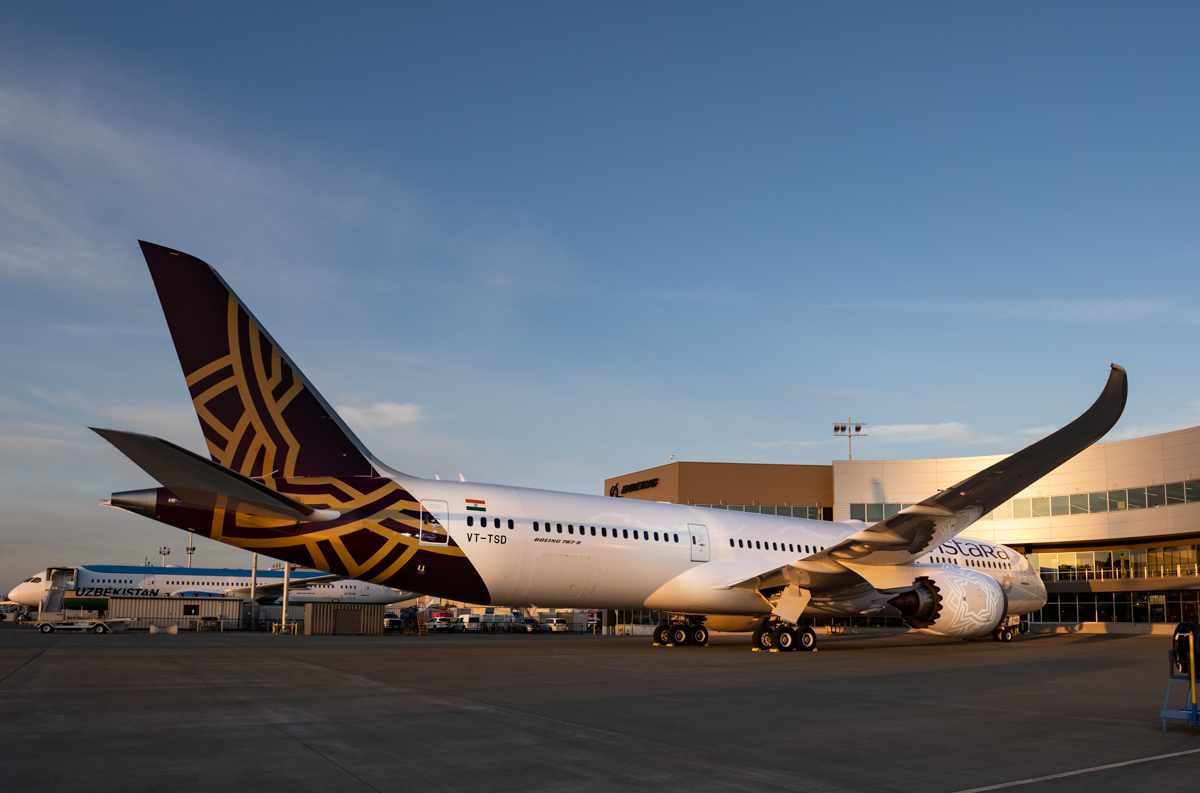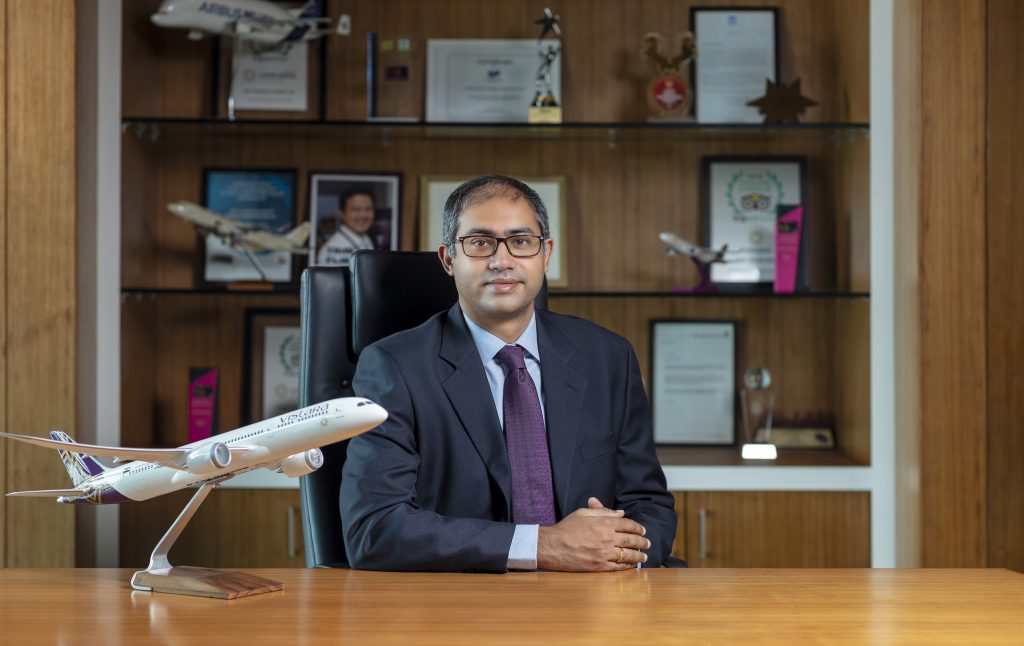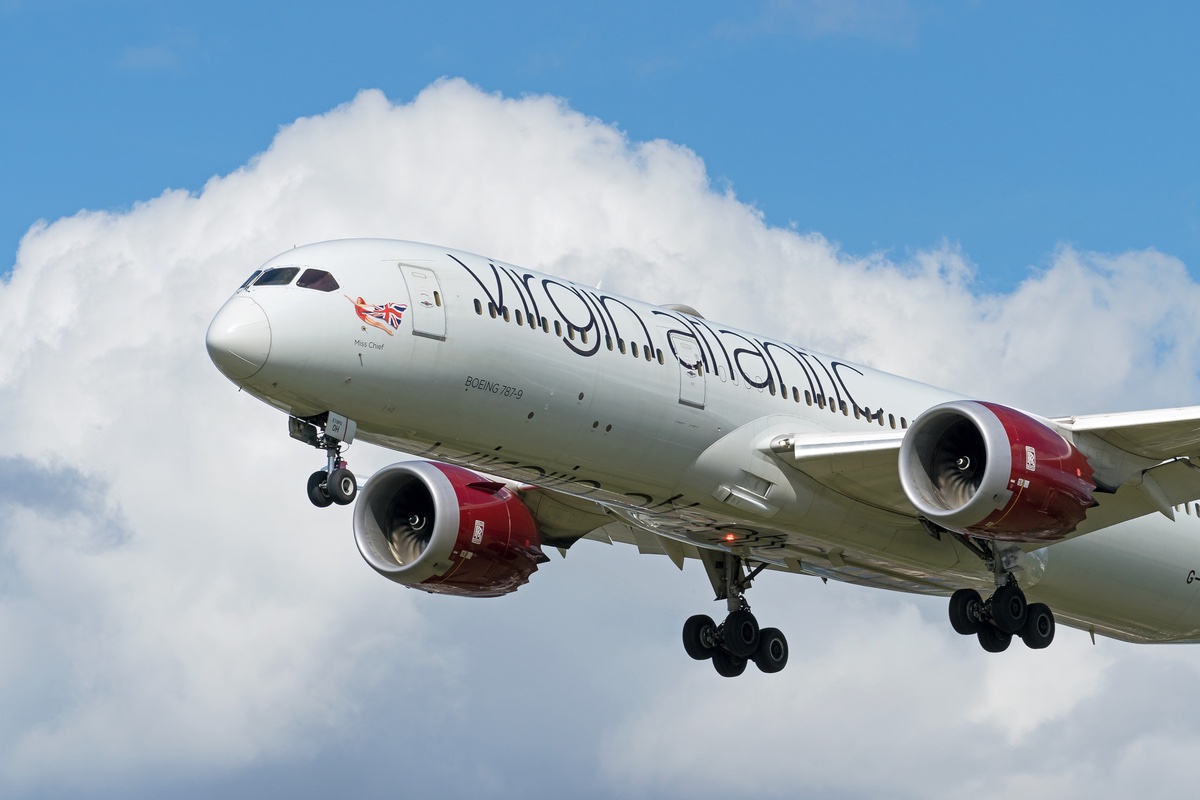Vistara CEO on Fighting India's Low-Cost Carriers and Nagging Merger Questions

Skift Take
Clearly Vinod Kannan, the CEO of Vistara, may have had to field this question on the possible Vistara-Air India merger one too many times.
And while his immediate response was a — “I really don't know what is happening,” he quickly went on to add, “Not that I want to evade the question, but there are certain discussions that are happening which I’m not privy to.”
Kanan said this is a question more for the shareholders. Tata owns 51 percent of the airline while Singapore Airlines owns the remaining 49 percent.
A Singapore Airlines veteran, Kannan joined Vistara as the chief strategy officer in 2019 and was made the chief commercial officer in 2020. In January, he was elevated to the ranks of the CEO.
Commenting on the merger, Kannan added that he and his team are focused on Vistara’s progress, “I tell my team that no matter what, the 54 aircraft that we have will have to be serviced, sold and operated. Until we are told otherwise, we will maintain that we will be operating independently.”
In conversation with Skift, Kannan talks about the future of Vistara — the only other full-service carrier in India, after Air India and how it is to operate a full-service airline in a market dominated by the low-cost model.
The comments have been edited for length and clarity.
Skift: The second quarter of the financial year from July to September is traditionally not the strongest quarter for airlines. But, Vistara cracked this period and has also gone on to increase its market share. What worked in your favour?
Vinod Kannan: That element of revenge travel has indeed worked for us. Stuck at home for long, people wanted to travel a bit more than they would normally have and this continued during the July-September period. During the Covid period, we also launched many campaigns to instill confidence among customers.
And then we also expanded internationally in the last two years. We now have daily flights to London, and flights to Frankfurt, Paris, that has also added to the numbers.
The revenue performance has been very strong as the demand and market share have all been very positive. However, much as revenue has been very strong, cost has also been pretty high this quarter. High fuel cost, plus the depreciation of the Indian rupee has had a significant impact on cost.

Skift: Vistara had earlier been looking at a one-stop U.S. connection. Would you be keen to take that forward?
Kannan: The aircraft that we have do not allow us to do a non-stop to the U.S. because of the configuration and the specifications. Yes, we were looking at a one-stop into the US and that's something that we will look at again depending on when the aircraft comes in. Before making any plans, we want to be certain of the delivery dates because these are long tail markets, and we don't want to put in flights and then cancel them. In certain months of the year, certain routes do better. So, those are all evaluations that we would work on.
Skift: The airline has been strengthening its presence in the United Arab Emirates. Do you see your premium economy seating offering a competitive advantage to Vistara over Gulf carriers?
Kannan: We have connections to Jeddah, Dubai and recently Abu Dhabi and would like to increase our footprint in the Gulf.
During the two years of Covid the preference for premium economy has increased because post Covid people are more inclined to have a little bit more space, some privacy and a slightly better product. Our premium economy as a whole has seen some good pick up across the network. I think our economy class product is also as good, if not better compared to most of the Middle East carriers.
What has also worked pretty well for us is that our narrow body A-321s have a lie-flat business class which not many airlines offer.
Skift: As you bring in more aircraft, will you be looking to expand domestic operations or would the focus be more towards international expansion?
Kannan: There will be domestic expansion, but, international will be the focus. Even during Covid we had operated to a few more points like Hong Kong, Seoul and Tokyo. Those are all routes that we've tried during the worst of times so we'd like to go back and look at those routes.
As almost 80 percent of the Indian domestic market share is dominated by low-cost carriers, the value that we bring to the table gets magnified on the international side.
With longer flights people want a little bit more comfort when they travel internationally. So, that's why we will focus a bit more on international connections.
Currently, in Europe we have a daily to London, twice weekly to Frankfurt and thrice weekly to Paris. Our first priority will be to up Frankfurt and Paris to a more reasonable frequency, which is what we are doing during northern winter. We just got another aircraft, which we've taken on lease and that would be used to augment the services we have.
For the long haul, we have the Boeing Dreamliner 787-9. We now have three of them in the fleet but our order book has four more 787s with Boeing.
Boeing has been facing some issues due to which it has not been able to deliver. However, it has now started delivering its 787s and the indication is that they will come sometime in 2023. There are some delays even from Airbus for the narrow bodies. We are working on that, but we're very confident that there will be an expansion in the winter season.
In the summer season, we were at 250 flights a day, right now we are at 260. By the end of winter, we hope to hit about 270 to 280.
Skift: How difficult is it for a full-service carrier to survive in a market like India, which is dominated by low-cost carriers?
Kannan: As long as the Indian consumer gets value for money and there's a product or service that's being offered in line with the payment, passengers are willing to pay. How else, would we have managed the second biggest domestic market share and flown 35 million passengers. With increasing disposable income as people become more upwardly mobile, they would want to try and travel in a carrier that gives them more than what the normal low-cost carrier does.
Also, when you break it down and look at how we charge versus competition, we might be a bit more expensive but the value we bring far outweighs the cost.





